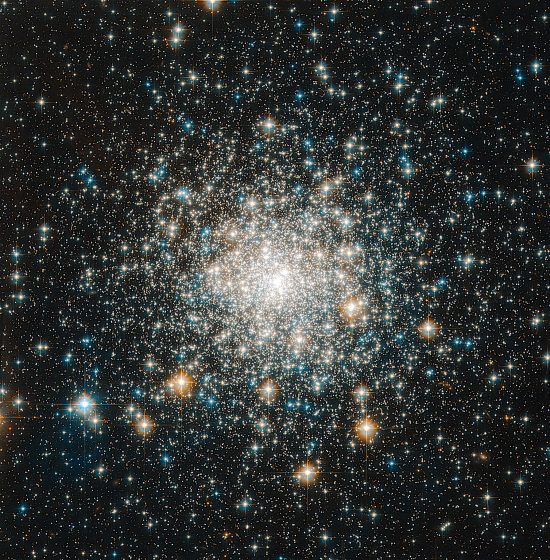
July 9, 2020
Remote globular clusters exhibit anomalous light frequencies.
“I am very astonished that the scientific picture of the real world around me is deficient. It gives a lot of factual information, puts all our experience in a magnificently consistent order, but it is ghastly silent about all and sundry that is really near to our heart, that really matters to us. It cannot tell us a word about red and blue, bitter and sweet, physical pain and physical delight; it knows nothing of beautiful and ugly, good or bad, God and eternity.”
— Erwin Schrödinger
Each new observation from the Hubble Space Telescope or the Chandra X-ray Observatory adds fuel to the Electric Universe fire. Funded research groups, on the other hand, are faced with constant adjustments to existing theories as new data becomes available.
The Hubble Space Telescope reveals clusters of stars orbiting another galaxy over a billion light years away that are not behaving as conventional understanding suggests: rather than being blue-white they are red.
Modern astronomers use a measuring rod for the Universe that is based on expansion out of a primordial explosion. They believe that objects farther out into space are representative of the Universe as it was closer to its beginning. Because galaxies located at 1.2 billion light years are supposed to be as they were 1.2 billion years ago, the expectation is that any stars that are observed at that distance should be youthful, near the beginning of their lives, with rich supplies of hydrogen fuel. In that case, the stars ought to be burning hot and blue, radiating high frequency X-rays and extreme ultraviolet light.
Globular star clusters are normally found in a halo around galactic nuclei. They are thought to be structures that have been gravitationally attracted to the host galaxy because many of them have the appearance of age—they have large populations of red stars that are supposed to be old. Some theories speculate that the clusters might have been ejected from a host galaxy, or that they formed in conjunction with a host galaxy.
No one can be sure, but the ratio of blue stars to red stars is commonly used to indicate an overall age of one cluster with respect to other similar globular clusters. As the Hubble research team pointed out, however, many clusters in a remote galaxy are filled with stars that appear much too red for them to be so young.
In a previous Picture of the Day Dr. Donald Scott, in his book The Electric Sky, showed how the Hertzsprung-Russell diagram of stellar evolution can be improved by adding another scale to the horizontal axis: Current Density at the Star’s Surface. The means that the way stars appear when viewed through optical telescopes or X-ray detectors will not be dependent on age and distance, but on the amount of energy flowing into the star from the surrounding environment. The greater the electric current, the hotter and brighter the star will appear.
As stars suposedly accumulate heavier elements in their cores, they are thought to fluctuate in output when their temperatures change due to changes in the fusion reactions taking place. They turn red as one phase ends because the atmosphere expands and the outflow is spread over a larger area, and then they turn yellow or white again as another element starts to fuse into still heavier atoms. However, Hubble team members say: “It’s possible there’s something about stellar evolution we don’t understand.” The irony in that statement speaks for itself.
As Dr. Scott wrote:
“In the Electric Star model, perhaps the most important factor in determining any given star’s characteristics is the strength of the current density in Amperes per square meter (A/m^2) measured at that star’s surface. If a star’s incoming current density increases, the arc discharges on its surface (photospheric tufts) will get hotter, change color (away from red, toward blue), and get brighter. The absolute brightness of a star, therefore, depends on two things: the strength of the current density impinging into its surface, and the star’s size (the star’s diameter).”
So, in reality, the Hubble research team has not discovered anything that is particularly out of the ordinary. The stars in the globular clusters are merely obeying another aspect to the cosmic energies that permeate the Universe: electricity. It is possible that they are not as far away as they appear. They may not be nearly as old as the team thinks because they are not behaving according to gravity and redshift theories but according to theories of plasma cosmology.
Stephen Smith
The Thunderbolts Picture of the Day is generously supported by the Mainwaring Archive Foundation.












